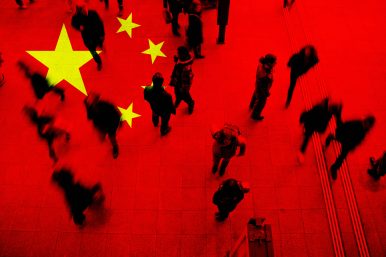By Robert Farley
 Even China hawks need to make a careful appraisal of what sparks joy in the Sino-American relationship.
Even China hawks need to make a careful appraisal of what sparks joy in the Sino-American relationship.
Last week, Columbia University history professor Stephen Wertheim published an op-ed in the New York Times warning against the dangers of a new Cold War with China. Wertheim worries that opinion in Washington on the state of the relationship with China has changed dramatically in the past few years, across the political spectrum; Democrats are sounding nearly as hawkish on China as President Trump. Wertheim argues the Trump administration’s xenophobic approach to China risks ratcheting up tension to the extent that cooperation with Beijing will become impossible.
It may be a touch premature to sound alarm bells regarding an emerging New Cold War mindset in Washington, but it’s also important to carefully set forth the stakes of competition between China and the United States. The South China Sea is important, but it’s not Germany. Despite the ongoing “decoupling” between China and the United States, the relationship between the two is far tighter, and vastly more important domestically, than the relationship between the United States and the Soviet Union in 1945. The social, political, and economic relationship that China and the United States have built since the 1990s has helped to bring hundreds of millions of people out of poverty, and in so doing to transform the economies of both countries. Millions have traveled in both directions, and mutual cultural understanding has bloomed. “Civilizational” differences between China and the United States (or between the U.S. and Japan) have not prevented the two countries from developing one of the most productive economic relationships in world history.
The points of divergence between Beijing and Washington are undoubtedly real. While the ability of the United States to tolerate horrific human rights abuses is uneven, no one should try to downplay the nastiness of Chinese policy in Xinjiang or Tibet. Concerns about technology appropriation are real, although perhaps less existential than the hysteria of the last two years suggests. China’s military is growing larger and more lethal, although this is an almost necessary consequence of the growing size and sophistication of the Chinese economy.
Wertheim points out that China and the United States still need to work together on issues of global management. Climate change may be the biggest of these areas, but there are plenty of spaces in which both countries can benefit from coordination. The United States and the USSR cooperated on many global issues, despite viewing each other as existential threats. Given the extent of the existing relationship between China and the U.S., there are likely even greater grounds for coordination between Washington and Beijing.
And Wertheim is surely correct about the remarkable unanimity of the shift in U.S. attitudes towards China. This shift is all the more remarkable because of the polarization of the U.S. political scene. And the 2020 election may make things worse, producing the kind of outbidding that bipartisan agreement can often generate. Of the major candidates, only Joe Biden has thus far offered a note of moderation on China. This is perhaps not surprising, given Biden’s comfortable fit within most elements of the bipartisan foreign policy consensus since the 1990s.
Competition between China and the United States runs the risk of becoming “total” to a degree that makes the Cold War seem like a walk in the park. Even China hawks need to make a careful appraisal of what sparks joy in the Sino-American relationship.
No comments:
Post a Comment